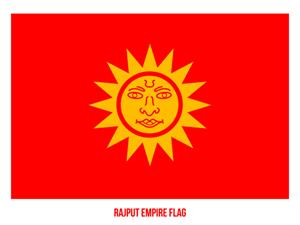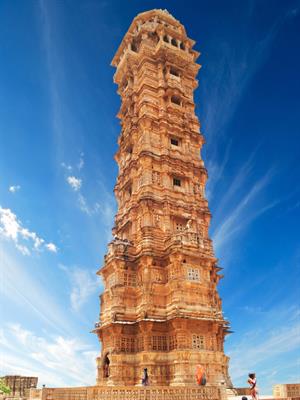PDF chapter test TRY NOW
After the death of Harsha in A.D.647, the future of India came into the hands of various Rajput dynasties. It was believed that, they belong to the ancient Kshatriya families.

During the 7th century A.D, Chittor was a prominent land of Rajputs, located in Rajasthan. By the time Rajputs had formed Rajputana (the collective land of Rajputs), Prathikaras and the Palas had emerged as powerful Kingdoms in western and eastern India, respectively.

The region of Rajputs in 11th Century A.D.
As an example of the courage of the Rajputs, Jaya Stambha, the tower of victory, was built in Chittor fort located at Chittorgarh, in commemoration of the conquest of Rana of Chittor over Malwa.

(Jaya Stambha) Fort Chittor in
Chittorgarh, Rajasthan.
The Prathikaras called themselves the sovereigns of Rajasthan and Kanauj. Later, the decline of Prathikaras paved the way for the rise of Palas in Bengal and Chauhans in north-western India. During the 7th century, the resistance shown by the kings of Kanauj and Rajput delayed the conquest of Arabs. Later, the Islamic period began during (CE)1200.
